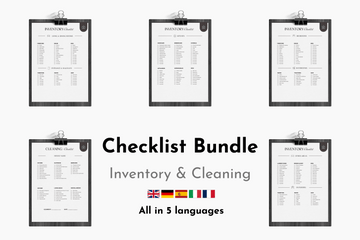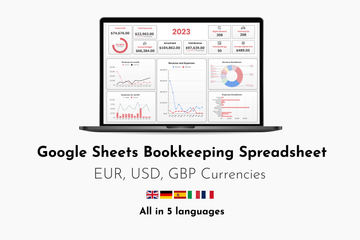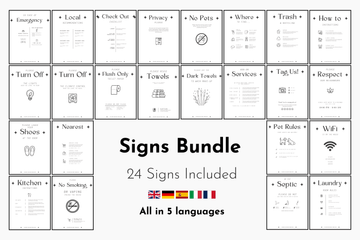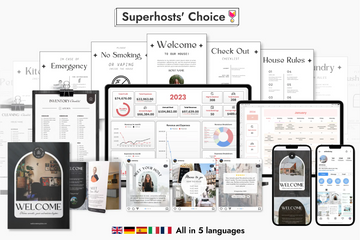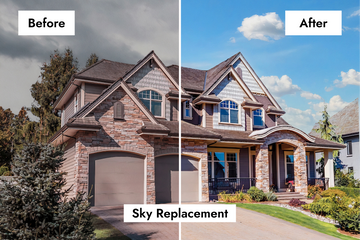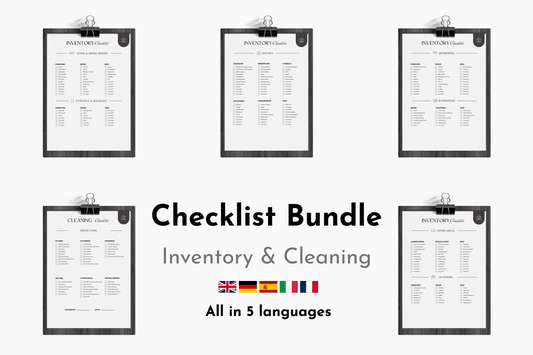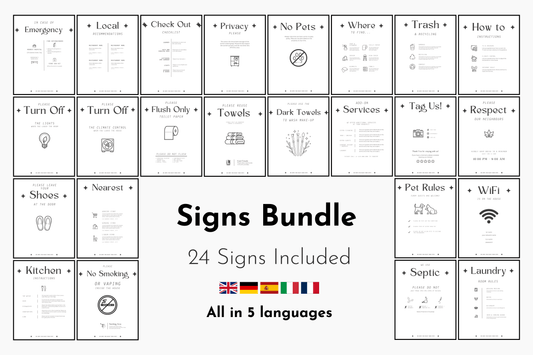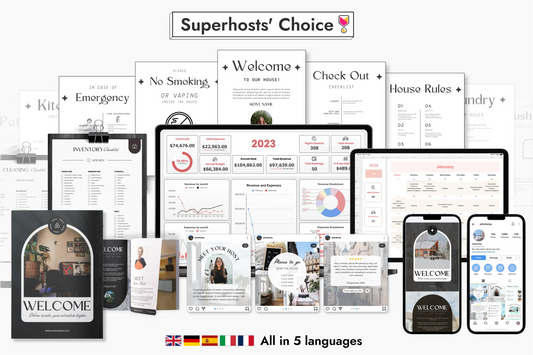In the competitive world of short-term rentals, setting the right price for your Airbnb listing is crucial. Whether you want to maximize bookings during low seasons or boost revenue during peak demand, smart pricing strategies can make all the difference. Implementing the right pricing approach will help you remain competitive, increase occupancy, and maximize your earnings. Here’s a comprehensive guide to help you create and implement effective pricing strategies for your Airbnb listing.
1. Understanding Airbnb’s Smart Pricing Tool
Airbnb offers a Smart Pricing tool that automatically adjusts your listing's price based on demand, availability, and market trends. When activated, Smart Pricing ensures your rates align with what similar listings in your area are charging. This tool takes into account:
- Location: Proximity to landmarks, downtown areas, or tourist attractions.
- Seasonality: Higher prices during peak travel seasons or holidays.
- Local Events: Large events such as concerts, festivals, or sports games that drive up demand.
- Listing Performance: Your reviews, response rate, and number of bookings.
While Airbnb’s Smart Pricing feature is a great starting point, relying solely on it might not maximize your earnings. It’s essential to combine it with other personalized strategies to find the sweet spot between pricing competitively and earning optimal revenue.
2. Factors to Consider in Pricing
To create a smart pricing strategy, it’s important to take several factors into account:
- Market Demand: Research local occupancy rates, seasonal trends, and major events that may affect demand. Adjust your prices accordingly for times when demand is high or low.
- Competitor Pricing: Look at similar properties in your area to see what they charge. Pay attention to their amenities, location, and reviews, and adjust your prices to stay competitive.
- Unique Selling Points (USPs): If your property has unique features (e.g., a rooftop patio, ocean view, or high-end amenities), you can charge a premium compared to competitors.
- Booking Window: Consider how far in advance people book your listing. Travelers who book early often expect lower prices, while last-minute bookings during high-demand periods can warrant higher rates.
- Length of Stay: Offer discounts for longer stays to attract guests who prefer week-long or month-long rentals. This is especially useful during slower seasons to ensure consistent occupancy.
- Cancellation Flexibility: If your cancellation policy is flexible, you might be able to charge slightly higher prices since many travelers are willing to pay for flexibility.
3. Dynamic Pricing Strategies
Dynamic pricing refers to adjusting your prices based on real-time market conditions, which is essential for maximizing revenue. Here are some dynamic pricing strategies to implement:
- Seasonal Adjustments: Charge higher prices during high season (e.g., summer, holidays, local festivals) when demand is high, and lower prices during the off-season to maintain occupancy.
- Event-based Pricing: Raise prices for dates when large events are happening in your area. Whether it’s a music festival, sports game, or conference, travelers are often willing to pay more during such times.
- Weekend vs. Weekday Pricing: Weekend rates are typically higher due to higher demand, especially for leisure travelers. Conversely, weekday bookings often attract business travelers, who may be more price-sensitive.
- Last-minute Deals: If you have open dates within the next few days, consider offering last-minute discounts to increase occupancy. This can be especially helpful during off-peak times.
- Advance Booking Incentives: Offer a small discount for guests who book well in advance. This ensures you fill your calendar early and secures income for future months.
4. Implementing Long-term Pricing Plans
While dynamic pricing focuses on short-term fluctuations, having a long-term pricing plan helps you remain consistent over time. Here’s how you can create one:
- Set Minimum and Maximum Prices: Define a minimum price to cover your costs (cleaning, maintenance, utilities) and a maximum price to capture higher demand without deterring potential guests.
- Seasonal Minimum Stays: Adjust your minimum stay requirements depending on the season. For example, during peak times, requiring a minimum stay of three or more nights can help optimize your calendar.
- Monthly Discounts: Offer significant discounts for guests booking stays of 28 days or more. This not only ensures stable income but also reduces turnover and cleaning costs.
5. Using External Pricing Tools
Beyond Airbnb’s built-in Smart Pricing tool, there are external tools that offer more advanced pricing capabilities. These tools gather market data from multiple platforms and provide real-time analytics to help optimize your pricing. Some popular options include:
- PriceLabs: A dynamic pricing tool that adjusts prices based on real-time supply and demand trends in your area.
- Beyond Pricing: Automatically updates your listing’s prices using algorithms that consider factors like seasonality and local events.
- Wheelhouse: Provides dynamic pricing insights, forecasts, and revenue management tools.
These tools give hosts more control over their pricing and allow for fine-tuned adjustments that the Airbnb Smart Pricing tool may not capture.
6. Leveraging Discounts and Special Offers
Another effective strategy to attract guests is to use discounts and special offers to fill gaps in your calendar:
- First-time Guest Discounts: Offer a small discount to new Airbnb users to encourage them to book your listing over others.
- Early Bird Discounts: Attract early bookings by offering a discount to guests who book several months in advance.
- Last-minute Discounts: If you have vacancies coming up in the next few days, reduce prices for those dates to attract last-minute travelers.
- Extended Stay Discounts: Provide discounts for guests who book longer stays, such as weekly or monthly bookings.
7. Monitoring and Adjusting Prices Regularly
Implementing smart pricing isn’t a one-time task. The rental market is constantly shifting, and it’s essential to monitor your booking performance and adjust your prices regularly:
- Track Occupancy Rates: If your occupancy is consistently high, you may be underpricing your listing and can raise your rates. If it’s low, consider lowering your prices or offering more discounts to attract bookings.
- Analyze Competitor Pricing: Keep an eye on how your competitors are pricing their listings, and adjust accordingly. You can use pricing tools or manually monitor similar properties.
- Use Airbnb’s Insights: Airbnb provides insights on how your listing is performing compared to others in your area. Regularly review this data to ensure your pricing remains competitive.
8. Avoiding Common Pricing Pitfalls
While smart pricing strategies can maximize your earnings, there are common mistakes that hosts should avoid:
- Underpricing in Peak Season: Failing to raise prices during high-demand periods can leave money on the table. Research local events and adjust your pricing accordingly.
- Overpricing in Low Season: Charging peak-season prices during slow periods can result in low occupancy. Be flexible and lower your rates during the off-season to maintain consistent bookings.
- Ignoring Competitor Listings: Not keeping track of what competitors are charging can lead to missed opportunities. Regularly review their pricing and make adjustments as needed.
- Inconsistent Pricing: Dramatically fluctuating prices can confuse potential guests. While dynamic pricing is important, aim for consistency over time to build trust with travelers.
Conclusion
Implementing smart pricing strategies for your Airbnb listing is key to maximizing both revenue and occupancy. By understanding market trends, leveraging tools, and adjusting prices dynamically, you can attract the right guests at the right times. Whether you choose to rely on Airbnb’s Smart Pricing tool or external pricing software, continuously monitoring and adapting your pricing strategy will help you stay competitive and boost your earnings year-round.



